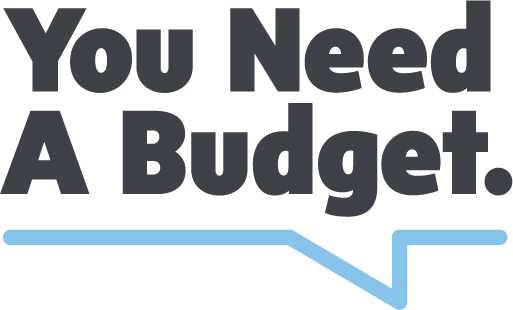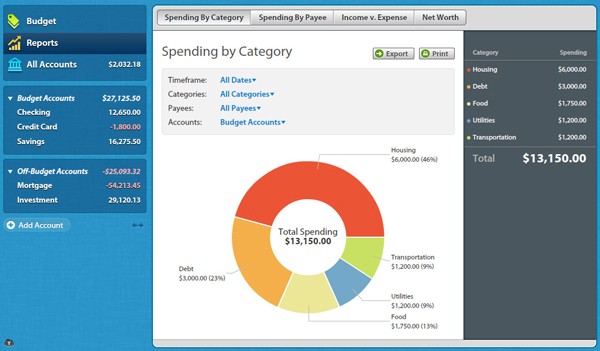Niki and I have an unhealthy crush on budgeting. It’s not quite teenage-girls-for-Justin-Bieber love, but it’s close. You probably already know I have a thing for apps, so you can imagine how a budgeting app could be my digital best friend.
We’ve been using Dave Ramsey’s system of zero-based budgeting for two and a half years, and it’s been an amazing journey. We’re debt free, saving for retirement and a future home and we’re able to be generous toward people and causes we believe in.
At first, we used the cash-only system. Every single category we pulled cash out for, except for savings.
That amounted to a scary stash of cash in our home every month.
So we migrated to an Excel spreadsheet for our larger categories. We still use cash for daily expenses–groceries, entertainment, toiletries, etc., but for things like car repairs and our own personal allowances, we switched to digital tracking.
It wasn’t a great system, but it worked for us. That hardest thing was that we didn’t have a ledger or report detailing where the money went for each category–just an updated balance for the category and the date it was last updated.
We needed a budgeting app that was:
- more convenient than a spreadsheet
- not made by Microsoft
- easy to use on the go
- good for keeping a record of expenditures
- a good fit with our zero-based budgeting system
- pretty

After lots of rave reviews about the software You Need a Budget (YNAB), we decided to pull the trigger on the desktop and iPhone software (mostly because we bought it on sale for half price. Budgeting, FTW!)
YNAB is based around four solid rules that mesh perfectly with Dave Ramsey’s plan.
- Give every dollar a job.
- Save for a rainy day.
- Role with the punches.
- Live on last month’s income.
Here’s how we’ve put it to use in our system.
Instead of budgeting all of our money out on a spreadsheet, we plug everything into YNAB. We created all the same categories and use it in practically the same way.
Here’s what’s great about it:
The Good Stuff
1. It’s built around zero-based budgeting.
That’s the idea that you assign every dollar a job before the month starts. Whether you make $1,000 or $10,000 a month, you decide where every single dollar goes between your only three options–giving, saving and spending. It’s about being proactive instead of reactive with your money.
2. The interface is amazing.
Especially on the iPhone version of the app. It’s built to be used right when you make a purchase. Now every time we swipe our debit card, we input our expenses. This budgeting software is actually fun to use, and we’ve gone all in.

3. It’s still cash compatible.
Instead of tracking every purchase for groceries, we just take out our budgeted amount and input it into YNAB as a withdrawal for cash spending for that category. So we’re committed to cash for the everyday things, but we use YNAB more extensively for longer-term or irregular items.
4. There’s an active community of nerds.
YNAB hosts a number of different free, live online classes on using the software (where they give away a free copy of the software in every webinar!) through intense budgeting ideas. There are forums where users contribute ideas and solutions too. This is majorly helpful in having community and support on your budgeting journey.
The Not-So-Good Stuff
Here are a few of my issues. I’ve listed more than the benefits, but these are seriously minor issues that can mostly be worked through.
1. Dropbox sync is finicky to start.
It took me a week to get Dropbox syncing working (and this is totally necessary if you’re using the iPhone software. I couldn’t find it anywhere on their website, but the file needs to be in your main Dropbox folder (i.e. Dropbox > My Budget.ynab4, not Dropbox > YNAB > My Budget.ynab4). That’s the only way you can get it to sync with your iPhone without some 404 error. Hopefully that saves you some frustration.
2. There’s wasn’t an iPad app, but now there is. Woo hoo!
In fact, the iPad version of YNAB is perhaps the best iteration of our favorite budgeting app. It allows you to create and adjust your budget, which was previously only possible on the desktop version, and it _just feels right _using YNAB on the iPad.
The iPhone app excels in allowing you to input transactions, and the desktop app excels in allowing you to craft your budget and tweak your accounts. The iPad app is the best of both world’s, and it’s my favorite way to use YNAB.
3. It doesn’t automatically sync with your bank account.
It’d be really nice if you could automatically sync expenses and then systematically go through and choose which categories they should come from / also confirm what’s already been inputted. Technically you can import a .csv file, but it’s labeled “for advanced users only,” so I’m a little nervous to test it out.
I think this is a conscious decision by the YNAB team to ensure you are actively managing your budget and not passively (a la Mint.com). Sometimes it takes us a day or so to input our receipts, so it just takes more time than syncing to our bank and taking care of it that way.
4. It’s a little tricky to transfer from your current non-YNAB budget if you have sinking funds.
YNAB forces you to budget every single dollar, which is great. But when you already have money saved and allocated for certain categories, there’s no easy way to input sinking fund amounts. My best solution was to go to the previous month and put in all the amounts already in those electronic envelopes for that month’s budget.
For examples, say we had $500 saved in a sinking fund for car repairs, and we save $50 / month. For January (if I’m starting in February), I’d put $500 under car repairs and then put $50 in the deposit line for February, so at the end of February, I’d have $550 in there. I was trying to find information on how others handled this situation online, but I couldn’t find any solutions. This works, it’s just a little goofy.
5. You need to dream up a solution for when you spend on a card what you already took out in cash.
This is a strange situation. We take out all of our cash for groceries at each paycheck and always pay cash. Except when we don’t. Sometimes, especially at Target where we have a debit card that gets us 5% off, we use a card. Then we take the cash out of the envelope, store it in our home “Bank” envelope, and distribute cash first from there on the next paycheck.
Here are the options I’ve come up with:
-
Create a “Cash” account in YNAB as a separate account where you track the cash you have at home, waiting to be distributed for the next round of cash-envelope categories.
-
Debit the grocery account normally, so it looks like you’ve gone over in YNAB, even though you haven’t busted your budget.
I don’t love either of those options, but I’m leaning toward the first. I’m still trying to work out a good solution, so if you have any ideas I’d love to hear. The issue is the bank account balance and the YNAB balance don’t match if you don’t do something, which is too hard for me to let go as a total nerd.
Wrapping Up
We’re big fans of YNAB in our first month of using it and already consider it the best budgeting app around because of it’s easy of use, built in system, helpful guides, and amazing interface. At $60, it’s a bit steep, but they say there’s over a $3,000 savings in their committed users in the first year. It’s occasionally on sale for $30. You can’t use the free iPhone app without the desktop software, but there is a 34-day free trial at the website so you can take it for a spin yourself and let us know what you think!